Each decorator is equipped with 6 and up to 8 inkers, all of which are driven from the ring gear to ensure perfect synchronization and registration during high speed. Timing and registration are very important to obtain a perfect printed can at any speed. But sometimes we encounter problems such as double images, or the log moves to the left or right, as you can see below.
As you can see here the image moves.
To avoid this type of situation, the entire machine must be in perfect condition, especially the backstop.
The backstop works as follows:
There are two helical gears approximately 1″ wide. The first is connected to the inker shaft and is called the stationary drive gear. The second is connected to the first with shoulder bolts through slotted holes. A series of springs hold the second gear at one end of the slot. When installing an inking unit, be sure to align the teeth on the anti-backlash gear with the gear on the ring gear. Once engaged, the teeth are forced into alignment with each other and spring pressure is applied which eliminates any possibility of backlash between the teeth of the two gears. This helps to avoid double images due to speed changes, stops and starts.
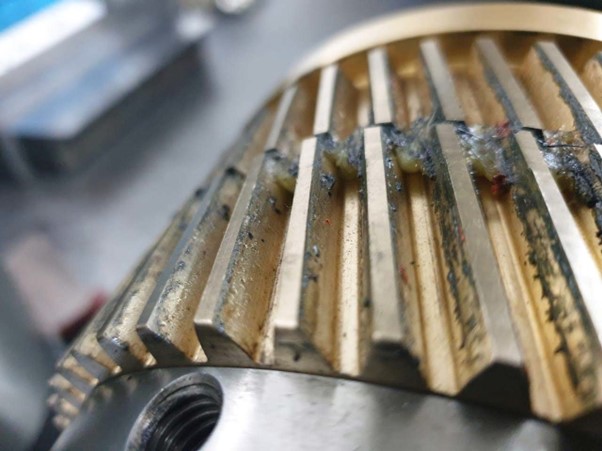
Note: Because the crown gear and anti-rebound gear are both metal, it is extremely important to maintain lubrication between these gears.
A frozen anti-backlash gear can cause this problem, so it is very important to keep the anti-backlash gears lubricated at all times.
But sometimes it can be something else that causes this problem, sometimes there is too much backlash in the drive train and the backstop gear cannot eliminate the backlash.
As we know we have a crown and all inkers will be driven from it, as you can see below.
And if the crown is not very well maintained it can cause image movement as seen above.
Here you can see that the teeth of the ring gear are worn or broken, so the anti-backlash gear is not able to eliminate the backlash.
The main motor is driving the decorator from the oven chain. This configuration was mainly used in earlier designs.
As the Decorator was printing the cans they have realized that the oven chain drive is not good at higher speed, the reason was that we had too many gearboxes between the drive and the printing area.
Each gearbox has its own clearance and this is limited to a certain point, but if this clearance is excessive inside the gearbox, take a look below.
Once the drive screw is worn, the backlash gears have difficulty in removing the backlash, especially in low to high speed gear changes, then you will see the image move left and right.
Under normal conditions, the decorator should have a smooth upward and downward ramp speed to maintain the lowest possible force on the worm gear.
However, this is only one component that can cause image movement, one more element is our connection between the spindle disc and the blanket wheel.
To connect these, we are using our splined coupling, and here again maintenance and lubrication is very important to reduce friction and keep them for a long time in good condition.
Just below you can see another photo showing a poorly maintained spline.
Therefore, one more element can cause the problem of image movement.
But the most important thing is to keep the anti-backlash gear and the crown wheel sufficiently sanitized, and lubrication in this case is very important.
What can happen when the anti-backlash gear jams and damages the ring gear.
Due to jamming of the anti-backlash gear and severe damage to the girth gear.
This situation is very bad, because in this case there is no more spring inside to remove the work and the impression will be very bad.
In general, we should all try to operate the inking unit and backstop gear with as little pressure as possible, otherwise we will quickly damage the part and the teeth will wear out in a short time.
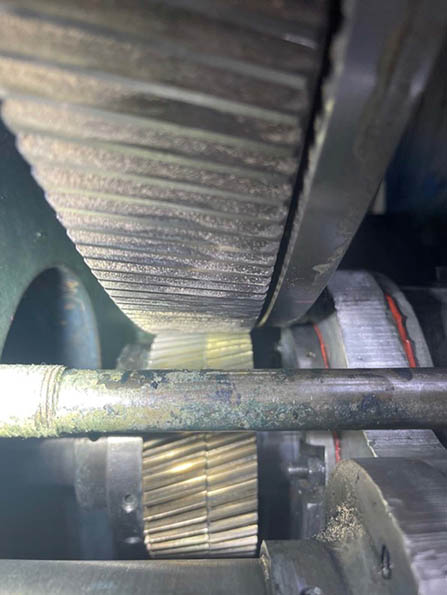

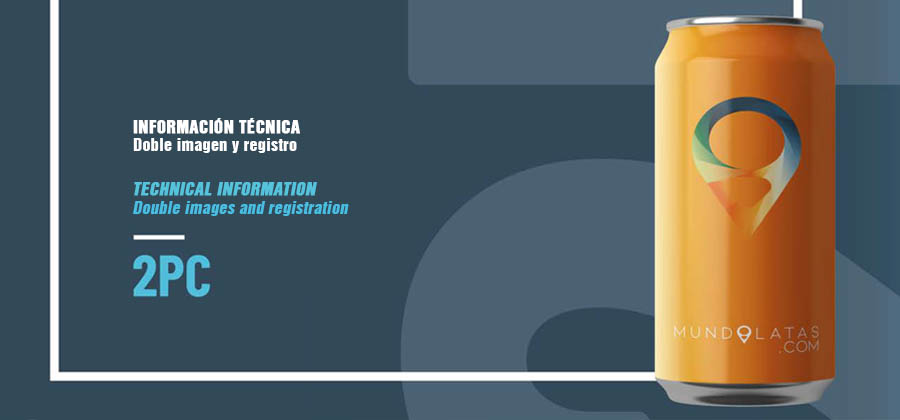
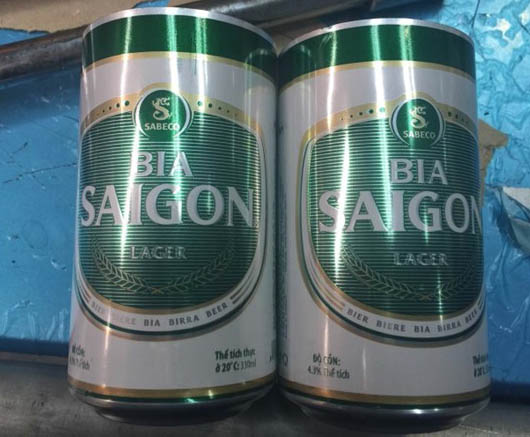
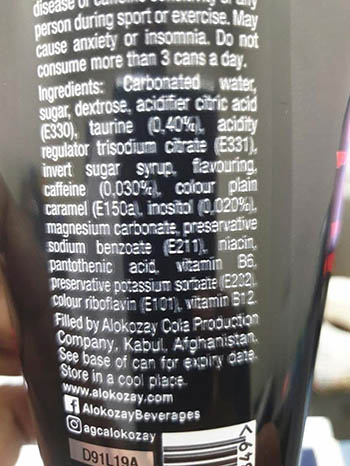

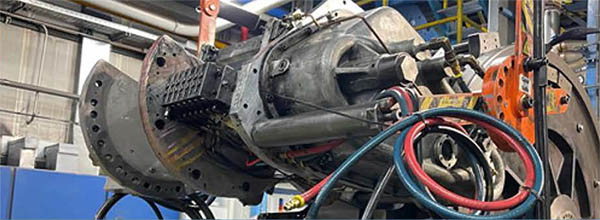
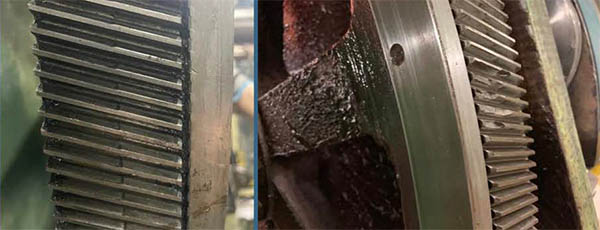
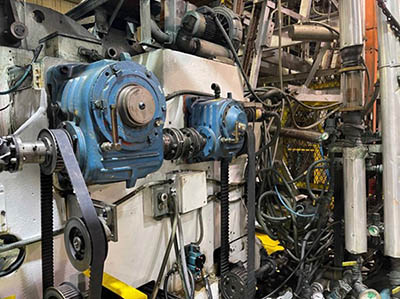
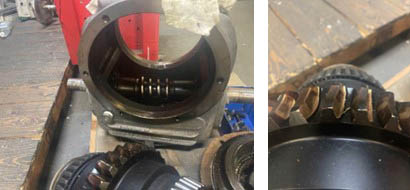
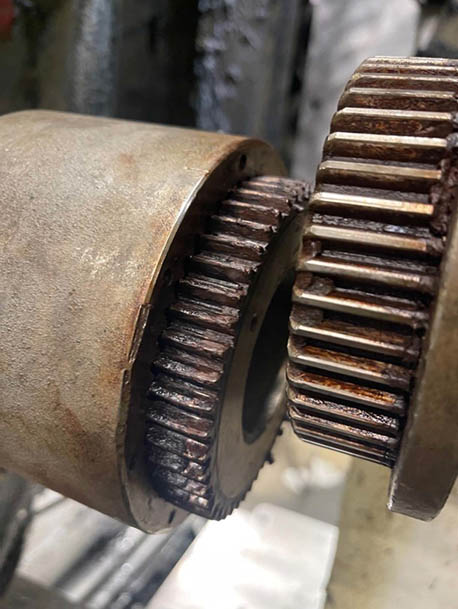
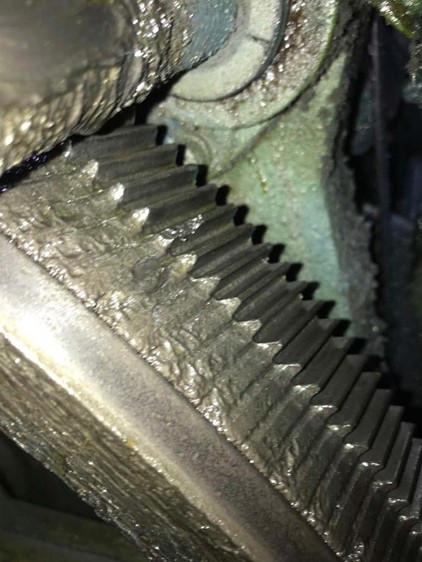
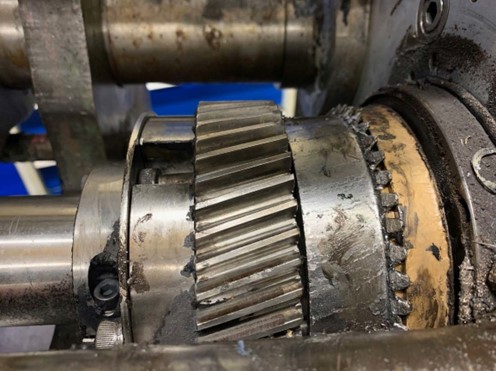
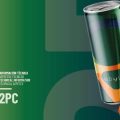

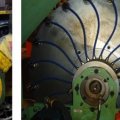

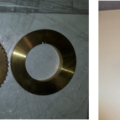
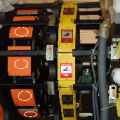

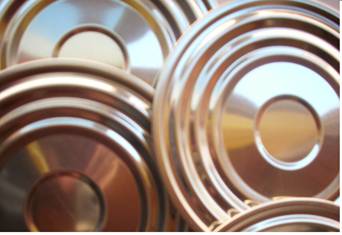
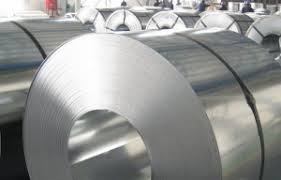



0 Comments